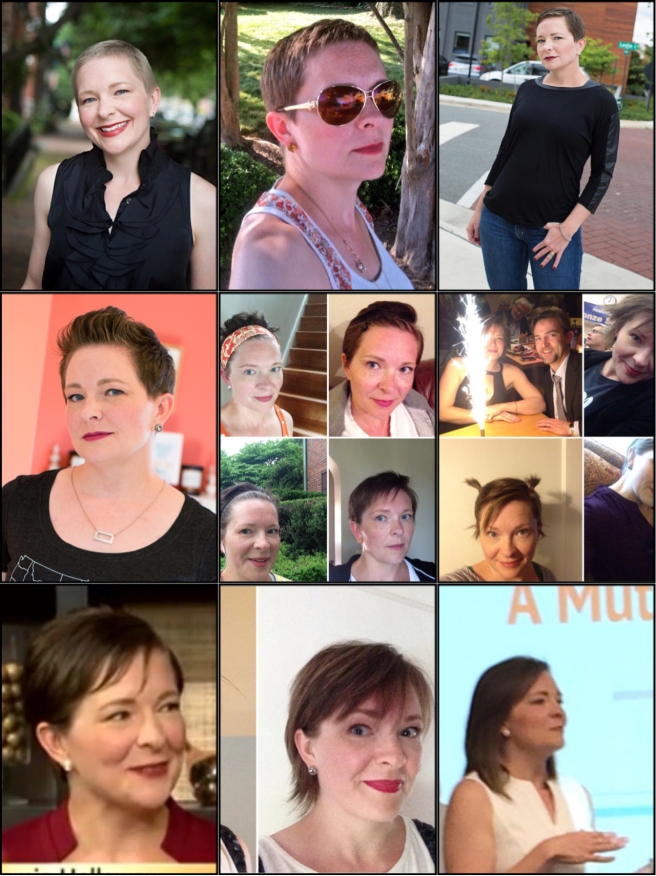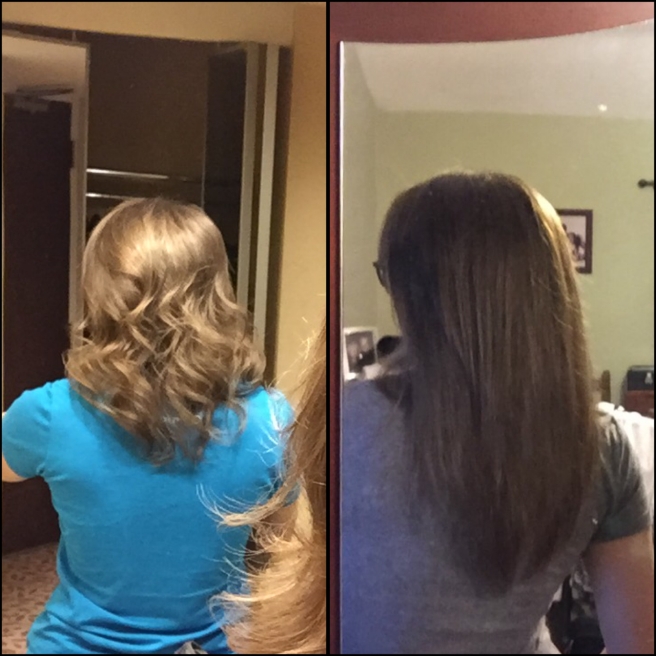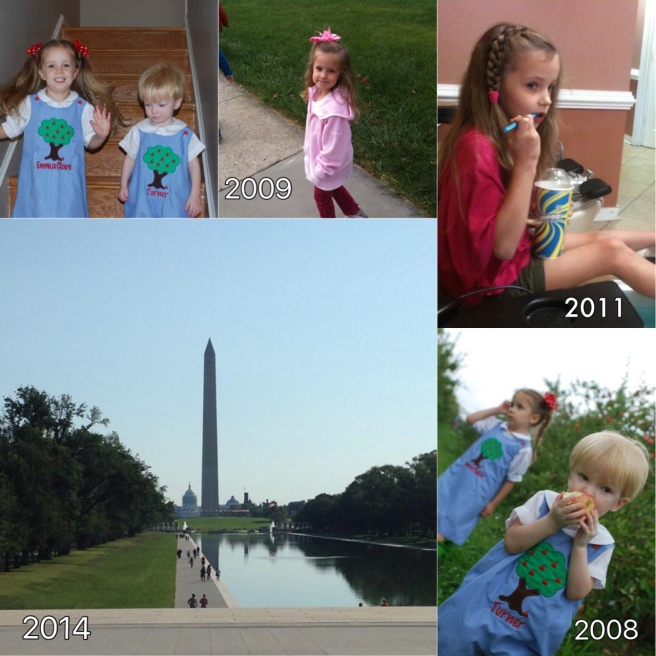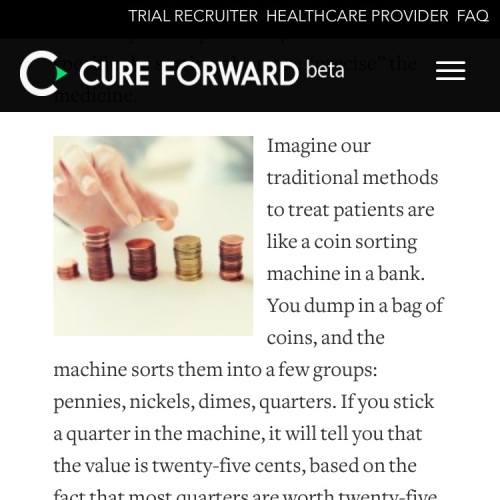This post was sponsored by Celgene Corporation. Personal opinions and thoughts are my own.
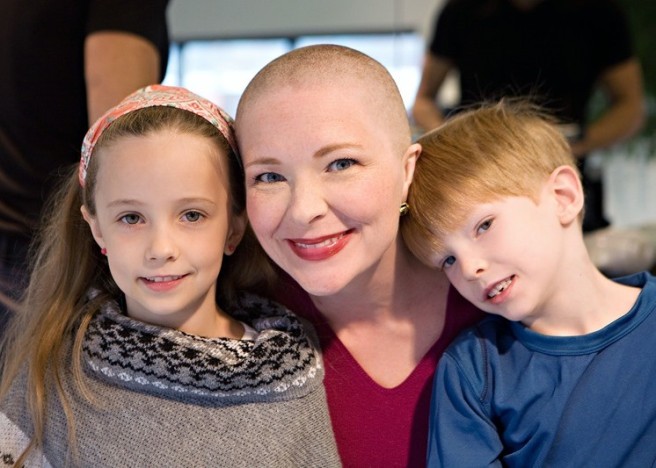
When I was diagnosed with breast cancer, one of my biggest concerns was for my kids—I wanted them to understand what was going on and be comfortable asking questions and interacting with me. They were 5- and 8-years-old at the time, and they were both smart and intuitive kiddos. I knew that I would want to be very frank and honest with them, but I didn’t want to scare them, either. That’s a pretty fine line. Someone once gave me a book written for kids whose mom was diagnosed with breast cancer. I read through it hoping that it might be something that would help explain things in an age-appropriate way to my kiddos. The scientist in me wanted an age-appropriate but scientifically accurate explanation, and the book I’d been given was pretty far off base. The conversation went well, as well as it could, I suppose, but I was a little caught off guard when the first words out of my little guy’s mouth were, “Are you going to die?”
Which is why I want to talk about a new, free app from Celgene called The Magic Tree. Just after arriving home from a support group meeting with other breast cancer moms with little kids where we’d been talking about just this issue, I got an email about a new, free app Celgene developed to help families facing that discussion. They created The Magic Tree app (download it at magictreebreastcancer.com or from the App Store or Google Play Store) for kids who are 5- to-8-years-old.
App Overview
The Magic Tree app has four different sections, and each features a short animated video and a game. As kids watch videos or play the games, they earn different stickers that decorate their tree. If you’re a left-to-right, rule-following left-brain like me, you might be inclined to start at the first icon of a house, but fight the urge and go to the playground first.
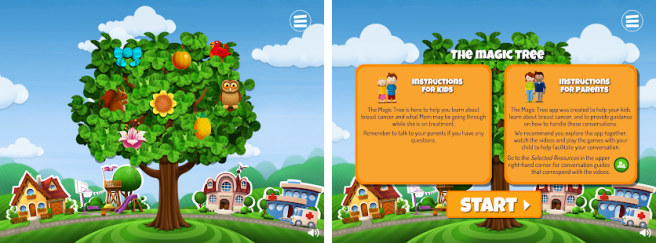
At the end of each video, they’ll tell you which section to head to next, and the videos make the most sense if you go in order.
The videos were well done, age appropriate, and (to my delight) scientifically sound. I would definitely suggest that you still watch them first to make sure that you’re comfortable with the amount of information they give and are ready for questions after you’ve watched them together with your kids. They are careful to tell kids that not all people with cancer die, which would have been a helpful message when I was talking with my son. They even encourage kids that sometimes grown-ups are better at talking about things like cancer when kids ask the questions. The longest video is the one that discusses how doctors treat breast cancer, and it does a pretty good job of talking about the treatments and their side effects. I was amused when they used a spaceship vaporizing bad cells to represent the immune system, explaining that cancer cells trick the immune system and can hide and grow without being killed. I was also particularly fond of the knight who represented chemotherapy, slashing through a few good cells in his efforts to slay all the cancer cells.
They explained that chemo will kill some other fast-growing cells in addition to the cancer, and that would cause side effects, like hair loss. The narrator assures kids that hair loss is very common (not something to cause fear) and subsequently showed the mom in the video bald or with a scarf on her head. Of course, there were also discussions about surgery and radiation, and they talked about how a mom might feel after her treatments. They were all short, simple, and ended by encouraging the child to speak to his mom with any questions.
Interactive games
Each section also has a game. In three of the sections, the game is just for fun—not a lot of skill required and no relationship to cancer. Which is pretty on point with one of the messages of the videos—you still get to be a kid and have fun even if mom is sick. The game in the first “Friends and Relatives” section, though, was pretty relevant. Kids are at a picnic, and they are told to hug the people there by tapping them. They have to be careful, though, not to hug anyone who is sick, and so must avoid tapping people who are coughing or have a red nose. This reinforces the message that it’s important to help keep mom healthy, so kids are encouraged to avoid people who are sick. Quite a few of the people appearing for a hug are bald or scarf-clad mom figures, and kids will quickly learn that it’s ok to hug mom.
Resources
The last section of the app can be accessed by clicking the menu icon at the top right. In that section, there is a glossary that the kids are encouraged to use when they see a word they don’t understand. They can tap the word and it will be read aloud along with a kid-friendly definition. It includes some words that aren’t used in the videos, but that parents might use when talking about cancer. I think probably my favorite section of the app is the discussion guide for parents. Be sure to read through this section before you watch any videos with your kids. Even if you decide not to have your kids watch the videos or play with the app, this is a great resource for parents. It has questions kids might ask as well as some thoughtful considerations about how a parent might answer. Finally, the resource section offers some suggestions of where to go if you need more information or support.

Overall Thoughts
The app is colorful and interactive, and while my kids were too old to ask for real impressions, I think most younger kids would happily watch a 2-3-minute animated video and play the games over and over again. Older elementary kids might not play the games as much once they had them figured out, but they would likely draw comfort from being able to re-watch the videos since knowing what to expect often eases anxiety. I love the fact that the app was developed with input from patients who are part of Cancer Support Community—having stakeholder involvement early on means that the final outcome is much more relevant. I would be remiss not to point out that while men can get breast cancer, this app is designed with a mom as the cancer patient. However, the glossary did point out that, while it is rare, men can get breast cancer too. And though I spoke about it a little differently with my own kids, I appreciated that one video addressed the fact that metastasis is when breast cancer spreads to other parts of the body, something that is often overlooked in children’s books. It’s hard to believe it’s been more than five years since that October afternoon when I was diagnosed. And in the years since, I’ve chatted with lots of moms with littles who are trying to figure out how to talk to their kids about their own diagnosis. One thing that I quickly learned is that no two kids are the same, no two families are the same, and so every family’s choice of what and how much they share will be a little different.
As I said, I quickly learned that the way I talked to my kids about cancer might not be right for every family. Parents know their kids best, and they need to make their own decisions about how to share things. But The Magic Tree app is an excellent resource for parents, and it could be a great starting point for discussions for many families facing a mom’s diagnosis with breast cancer.



